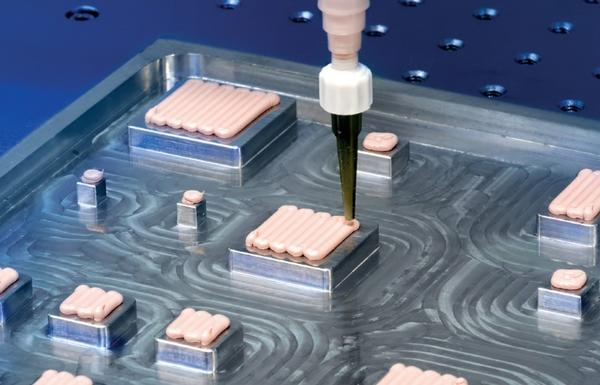What is thermal conductive gel? What are its advantages?
Time:2024-08-14
Views:358
With the leap-forward improvement of the performance of electronic devices, the performance requirements for all aspects of equipment and devices are getting higher and higher. However, high-performance equipment and devices will emit more heat when working, and the heat dissipation problem has become increasingly prominent, becoming a bottleneck restricting their efficient operation. How to control the temperature to ensure the high-speed operation of electronic equipment is highly valued by the industry.
When traditional thermal conductive gap materials cannot be installed, thermal conductive gel, as a highly reliable thermal management material that can provide heating devices, is being widely used in electronic devices.
1. What is thermal conductive gel?
Thermal conductive gel is a paste gap filling material made of silicone resin as a base material, with thermal conductive fillers and adhesive materials added in a certain proportion, and processed by a special process. It is mixed at a ratio of 1:1 (mass ratio) and cured into a high-performance elastomer. It is formed with the shape of the structure and has excellent structural applicability and surface conformity characteristics of structural parts. This material has some advantages of both thermal conductive gaskets and thermal conductive silicone grease, which makes up for the weaknesses of the two and is particularly suitable for space-constrained thermal conduction needs.
2. What are the advantages of using thermal conductive gel?
1. Excellent thermal conductivity. Compared with thermal conductive pads, thermal conductive gel is softer and has better surface affinity. It can be compressed to a very small thickness, as thin as 0.1mm, which significantly improves the heat transfer efficiency. At this time, the thermal resistance can be 0.08℃·in2/W - 0.3℃·in2/W, reaching the performance of some silicone greases, which not only provides a high guaranteed heat dissipation coefficient for electronic products, but also plays a role in ensuring the stability of electronic products (especially those that require high heat dissipation) during use, improving the performance and life of the products;
2. It has excellent electrical properties, aging resistance, resistance to cold and hot alternation (can work for a long time at -40~200℃), electrical insulation performance, shockproof, vibration absorption and stability, which increases the safety factor of electronic products during use;
3. It meets a variety of application scenarios. It is not sensitive to thickness, has good adaptability during equipment assembly, and is compatible with the impact of related devices or structural parts on dimensional tolerances. It can provide good contact between the heating surface and the heat dissipation surface under low pressure or no pressure;
4. Easy to shape, and the thickness is controllable; high thermal conductivity gel products do not need to be refrigerated, can be stored at room temperature, and are easy to use;
5. The system is colorless and transparent (except for special purposes) and can be used in any color with pigments;
6. Advantages of continuous operation. Thermal conductive gel is easy to operate and can be applied manually or mechanically. The commonly used continuous use method is mechanical dispensing, which can achieve fixed-point quantitative control, meet any working environment and working conditions, save labor and improve production efficiency.









